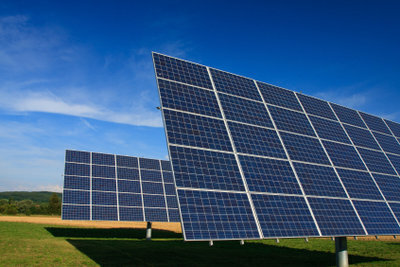How does photovoltaics work?
Photovoltaics is the general term for the generation of electricity from light energy in solar cells. But how exactly does it work?

The photo effect - you should know that
- The photoelectric effect is also called the photoelectric effect, a first indication of its physical background.
- In the photoelectric effect, electrons are released from their bond state by exposure to light. Sometimes the term "knock out" is also used in this context.
- These electrons are then available for the electrical charge transport.
- The physicist Philipp Lenard described this effect, but it was only Albert Einstein who was able to explain it in 1907 with the help of his light quantum hypothesis.
- This proved u. a. the previously undisputed wave theory of light as no longer tenable. The photo effect is clear evidence of the existence of light particles, also known as photons. This explanation ultimately led to the dualism of wave and particle.
What is kWp?
It is relatively easy to explain what kWp is. It is a theoretical ...
Photovoltaics - this is how a solar cell works
- Originally conceived as an energy source for space travel in the 1960s, photovoltaics can now also be found in everyday life in the form of differently structured solar cells.
- In principle, each of the solar cells used works with the described photo effect, i.e. in solar cells the photons of sunlight, regardless of structural features and selected materials, are directly in electrical energy converted.
- The most common photovoltaic models today are made of a semiconductor material such as silicon (or a combination of materials such as gallium arsenide). However, there are now also photovoltaics made of certain plastic films or organic materials.
- In semiconductor materials, however, the photo effect works a little differently than in metals. There, electrons are not knocked out of the material, but the light quanta generate so-called energy with their energy. Electron-hole pairs.
- These are two opposing charge carriers, namely the negatively charged electron and a positively charged "remnant", often simply called a defect electron.
- This pair is separated by special material properties (mostly doping with foreign atoms) and builds up the voltage of the solar cell.
- This voltage can then be tapped on attached (conductive) electrodes.
How helpful do you find this article?

